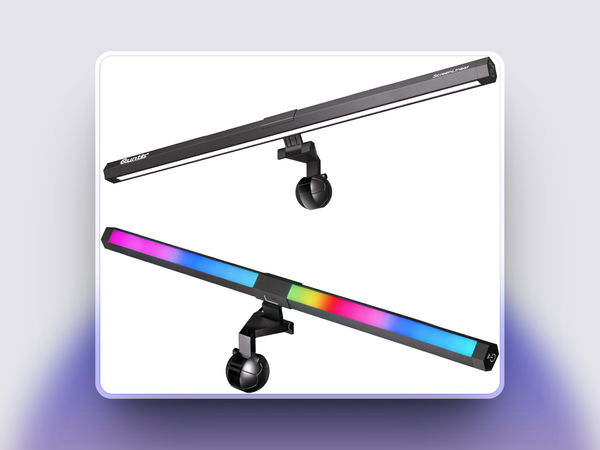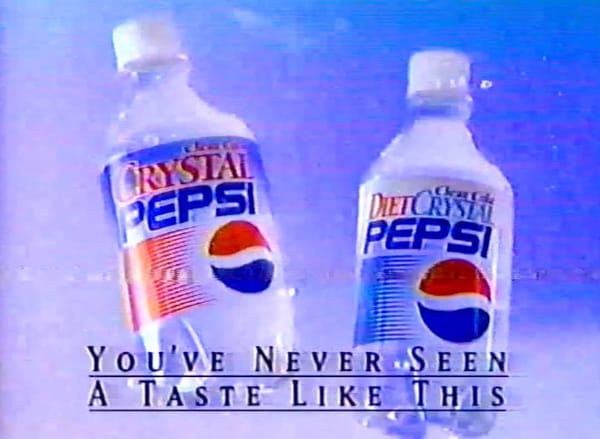The Enduring Excellence of Ridge Racer Type 4
A racing game I'll remember forever not just for the racing, but the people I enjoyed it with too

Not quite dark outside, summer brought with it a permanent state of twilight. While others slept, we kept busy.
Blery-eyed, the first time I played Type 4 was in the early hours of the morning with friends. I didn't sleep much when friends stayed over. We gamed, we ate, we talked about gaming.
But sleep? We'd have plenty of time to sleep when we were dead.
4:03 am. Feeling deprived and slightly out of it, I struggled to remain in the conscious realm. Apexes would come and go, but mostly missed each time my eyes drifted off. The sounds of Pearl Blue Soul lulled me gently towards the land of nod.
Just one more race, I'd tell myself. Just one more song.
I'd struggle to stay awake, but did. Tomorrow would be much of the same, with little in the way of responsibilities to persuade me staying up to this time was a bad idea.
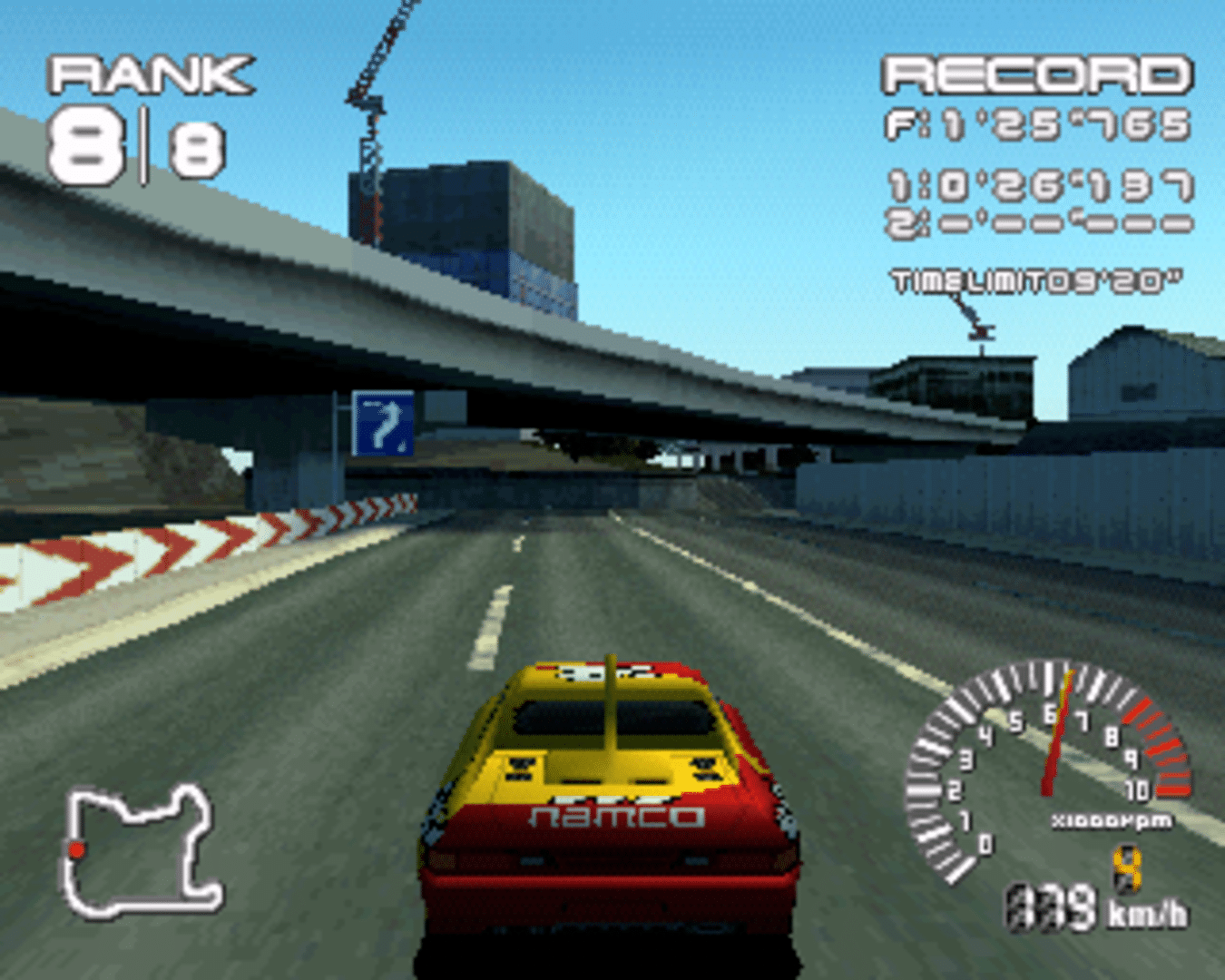
The same was true of my friends. Whatever we had to worry about at that age could wait.
In this state of semi-slumber, I knew I was experiencing something special. Audio and visual enchantment of the highest order. I was a huge Namco fan in the 90s, but Type 4 felt (and sounded) different.
I had always been a fan of the Ridge series of racing games, but this felt like a sizeable step in a different direction for Namco.
By porting its hot arcade titles to the PlayStation, Namco almost single-handedly made the system succeed, and in doing so helped kill the 32-bit competition: the Sega Saturn. - Sean Johnson, Game Revolution
It was the culmination of everything Namco worked on before, a swan song if you will, a sending-off for the 32-bit PlayStation that I'd come to accept as a bit of a centrepiece for solitary narratives during rainswept evenings, and shared experiences in the smallest of hours.
Type 4 was glitzy, otherworldly and at times, downright transcendent. But even now, some 25 years later, it holds its own against modern racers.
Why is that?
He's The One For Me
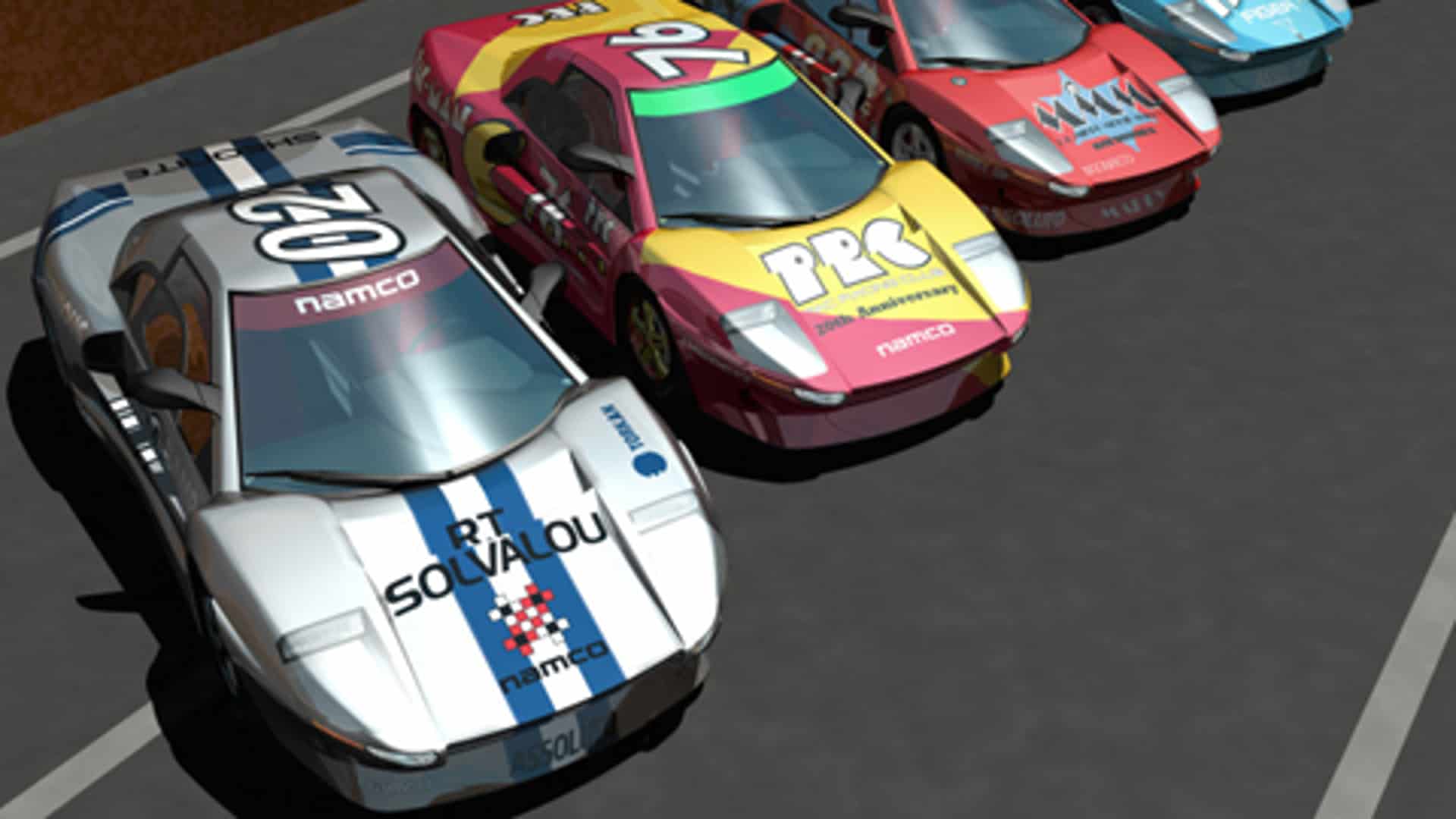
Controversial opinion: Ridge Racer, Ridge Racer Revolution and Rage Racer, were difficult games to master. Handling often felt disjointed and unpredictable for me, particularly when it came to drifting, a staple in the Ridge series.
I persevered though because it was an otherwise enjoyable experience. Whenever I think of the '90s, I hold all versions of the Ridge Racer series in high regard, just as Saturn fans might with Daytona or Nintendo fans Mario Kart.
I'm older now, and a little worse for wear in my joints, but Type 4 still has a magical, transcendent quality that brings me right back to where I was as a child.
But Type 4? Well, this is when things fell into place for the series, but more importantly, for me. Blery-eyed or not, it's safe to say that we spent many hours on Type 4 that night/morning.
The handling was superb, likely the most enjoyable I had encountered on a console at that time. This, I believe, is why the game is still enjoyed to this day.
As I manoeuvred around corners, I felt what can only be described as a "transcendent quality" to the drifting moments, elevating gameplay to a whole new level. It was addictive too.
Fundamentally, Type 4 made you feel as though you were a highly skilled race driver, and in a media landscape where characters and situations are often viewed as aspirational, the game served as a unique avenue for personal empowerment.
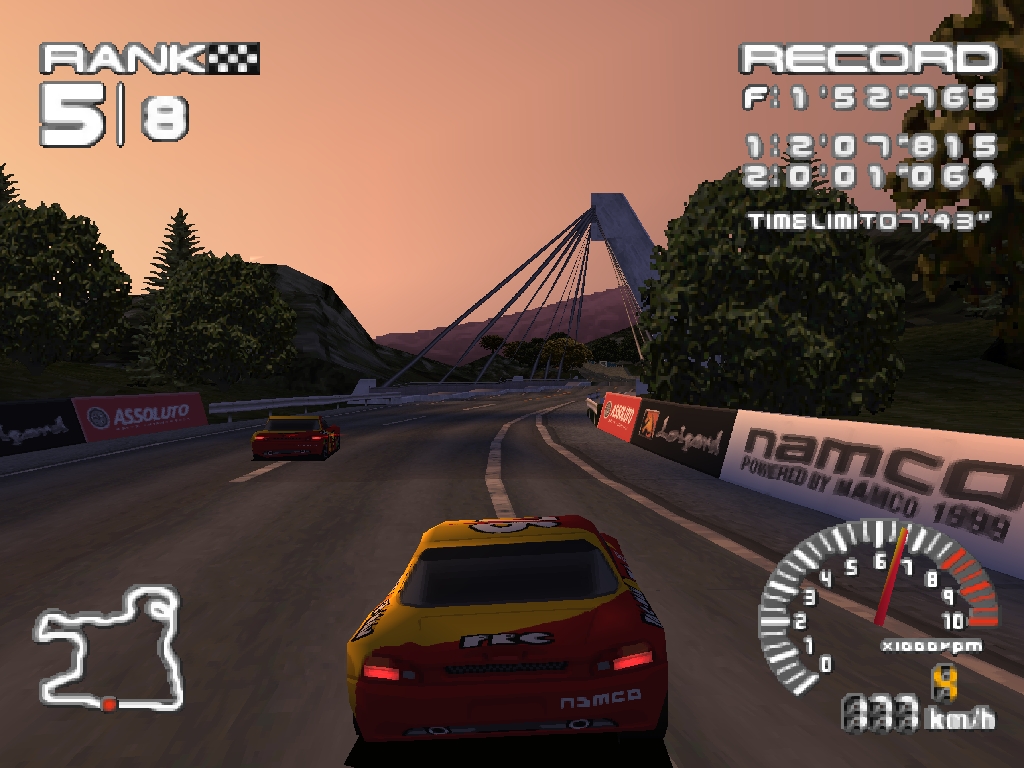
Much like how we admire characters in movies or TV shows for their exceptional abilities or situations, Type 4 allowed players to step into the virtual shoes of a racing pro, making each drift, corner, and victory a personal triumph.
In this way, the game became more than just pixels on a screen; it became a conduit for the realisation of racing aspirations and a memorable point in life where virtual and real-world experiences seamlessly intersected.
I'm older now, and a little worse for wear in my joints, but Type 4 still has a magical, transcendent quality that brings me right back to where I was as a child.
Gliding around a curve becomes a symphony of precision and finesse, where each drift feels like a brushstroke on the canvas of the track. It's not just about speed; it's about the artistry of controlling a vehicle with a perfect blend of control and flair.
It was (and still is) beautiful.
The game moves at a very high, smooth frame rate, and the tracks are filled with detail. Lighting is also well used, and things like brake lights give off tracers in tunnels. - Jeff Gerstmann GameStop
Now, add to this the phenomenal soundtrack. Ridge Racer Type 4 boasts some of the best music ever created for a game. Music that I still listen to now, and dare I say, inspired me with some of my musical creations.
The beats synchronise seamlessly with your every move, creating an immersive experience that transcends any typical racing game. The fusion of dynamic handling and an everlasting soundtrack turns each race into a captivating journey.
Elegance in UI Design
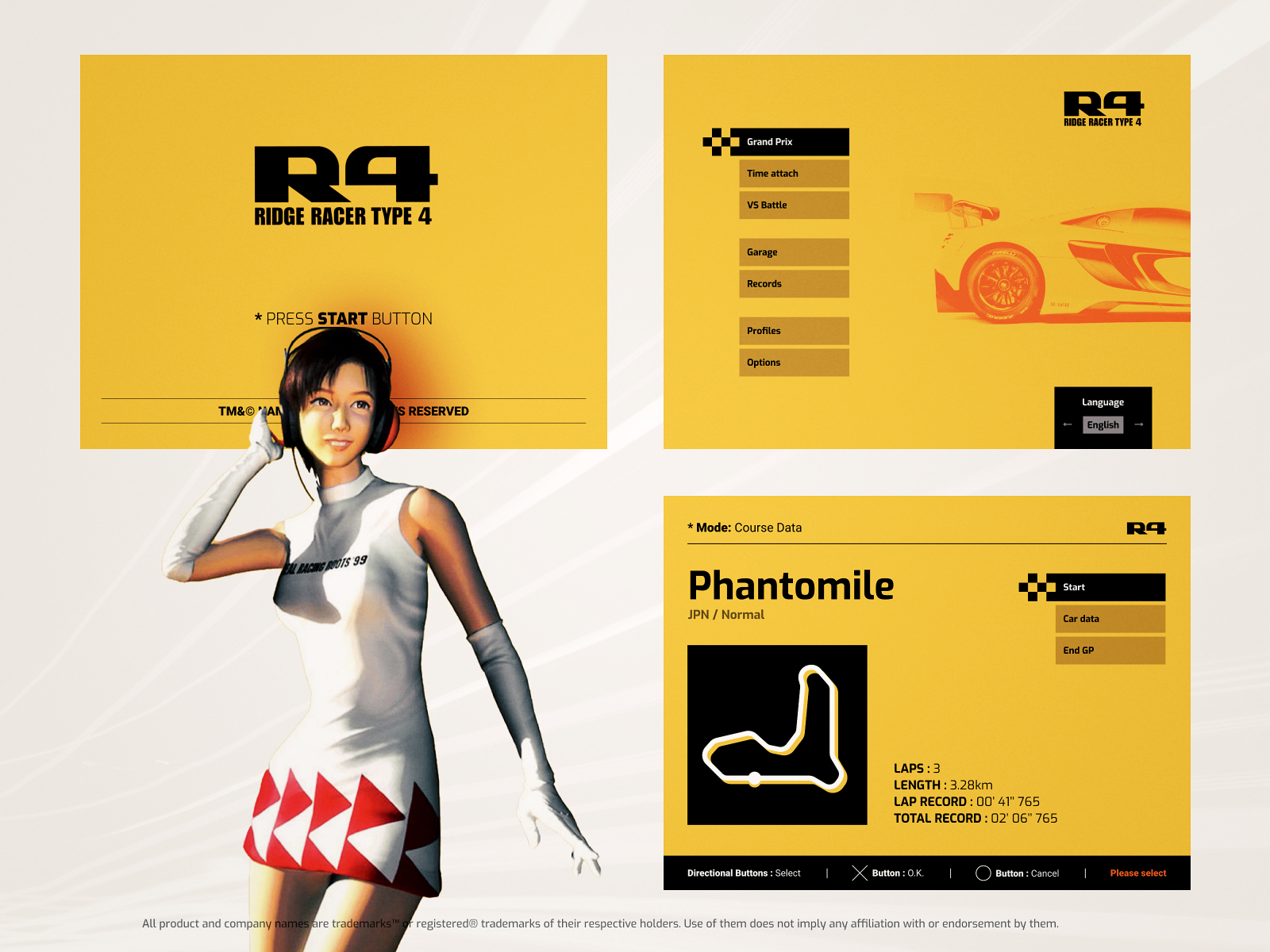
Type 4 features a sleek user interface that seamlessly integrates with the overall aesthetic of the game. The UI design is minimalist yet effective, ensuring that players can easily navigate through menus with little distraction.
The use of clean lines, subtle colour schemes, and well-organised layouts contributes to a user-friendly experience, underpinned by the slick music that plays in the background. The menu is an experience in and off itself.
Throughout, the UI maintains a dynamic quality, adapting to different contexts such as race selection, vehicle customisation, and track previews. The visual elements are not only aesthetically pleasing but also serve a functional purpose, providing clear information without overwhelming the player.
This thoughtful design contributes to the overall immersion, allowing players to focus on the racing experience rather than wrestling with a cumbersome interface.
Videogame UI design pretty much peaked with Ridge Racer Type 4. pic.twitter.com/IdDRUiGNCi
— Andy Kelly (@ultrabrilliant) December 17, 2018
In Ridge Racer Type 4, the UI is not just a functional necessity; it's a polished component that continues to inspire graphic designers to this day.
~ Happy 25th to Ridge Racer Type 4 ~ pic.twitter.com/6Nw34c4RjS
— EVΛN NIXON TYPE 4 (@EvanNixonType4) December 2, 2023
Arguably, this is the last great Ridge Racer. I disagree, as the PSP editions and Ridge Racer 7 are fantastic games in their own right. But with Type 4, I get why some people feel that way. It's the sum of all the talent at Namco in the 90s, and it is so much more than just a racing game.
It's an experience. A point in my life I'm glad I can say Type 4 was a companion, a source of joy that fueled countless memories and races, the musical backdrop to friends that came and went as we moved on to different chapters our lives.
Now, if you'll excuse me, I think it's time for one more race just before I head to bed.


